|
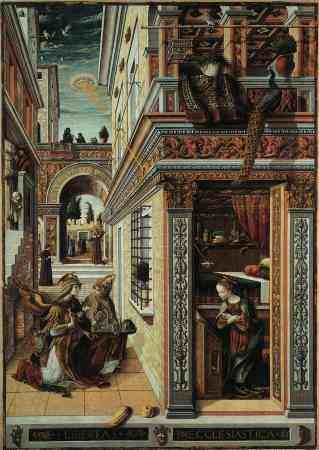
|
This painting is by Carlo Crivelli
(1430-1495) and is called "The Annunciation" (1486) and
hangs in the National Gallery, London. A disk shaped
object is shining a pencil beam of light down onto the
crown of Mary's head. |
|
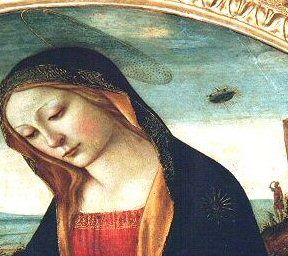
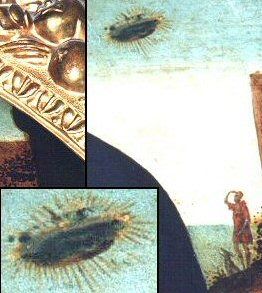
|
This painting is called "The
Madonna with Saint Giovannino". It was painted in the
15th century. The Palazzo Vecchio lists the artist as
unknown although attributed to the Lippi school.Above
Mary's right shoulder is a disk shaped object. Below is
a blow up of this section and a man and his dog can
clearly be seen looking up at the object.
|
|
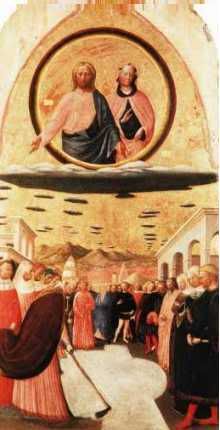
|
This picture depicts Jesus and Mary on what
appear to be lenticular clouds. The painting is entitled
"The Miracle of the Snow" and was painted by Masolino Da
Panicale (1383-1440) and hangs at the church of Santa
Maria Maggiore, Florence, Italy
|
|

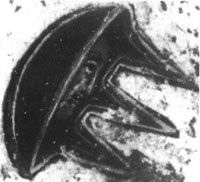 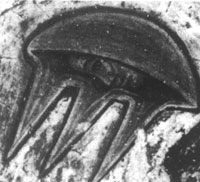
|
This is a 17th century fresco
and is located in the Svetishoveli Cathedral in
Mtskheta, Georgia. Notice the two saucer shaped objects
either side of Christ. In the two blow ups you can see
they contain faces. |
|
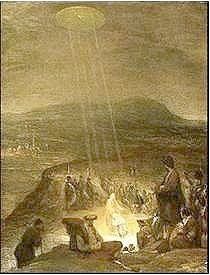
|
This image is by flemish
artist Aert De Gelder and is entitled "The Baptism of
Christ" It was painted in 1710 and hangs in the
Fitzwilliam Musuem, Cambridge. A disk shaped object is
shining beams of light down on John the Baptist and
Jesus |
|
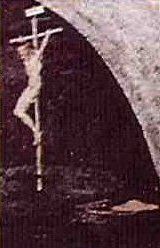 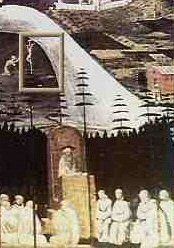 |
The painting is by Paolo
Uccello (1396-1475) and is entitled "La Tebaide"
(painted c.1460-1465). The blown up picture on the right
shows a red saucer shaped UFO seen near Jesus. It hangs
in the Academy of Florence. |
|
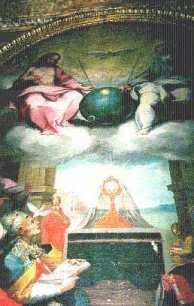
|
This painting is by
Bonaventura Salimbeni entitled "Glorification of the
Eucharist", painted in 1600. Notice the Sputnik
satellite device. It hangs in the church of San Lorenzo
in San Pietro. It is considered by some to be a stylised
representation of the Earth |
|

|
This is a 15th century
fresco from Kiev. Seems to show Jesus in a rocket type
device. |
|
 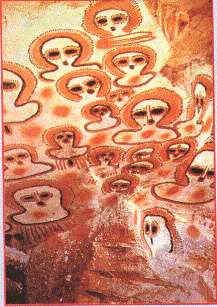
|
These a images from Australia. Possibly 5,000
years old. Some people believe they may represent ET
beings. |
|
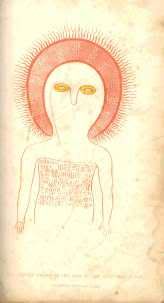 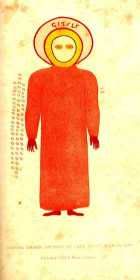 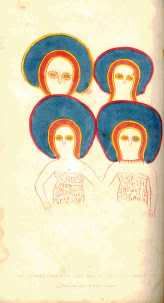
|
These are illustrations from
a book by Lt. Grey. "Journals of Two Expeditions of
Discovery in North-West and Western Australia 1837,
1838, & 1839". He led an expedition in the 19th
century to some caves near the Glenelg River region of
Kimberley, Northern Australia where he came across a
series of cave paintings. The beings are called the
Wandjina by the Aboriginies who painted
them. |
|
|